Studio Visit
What Fuels German Bulgarian Painter Oda Jaune in the Studio? ‘Squirrel Food’ and Experimentations With Holograms
We caught up with the artist at her London studio.
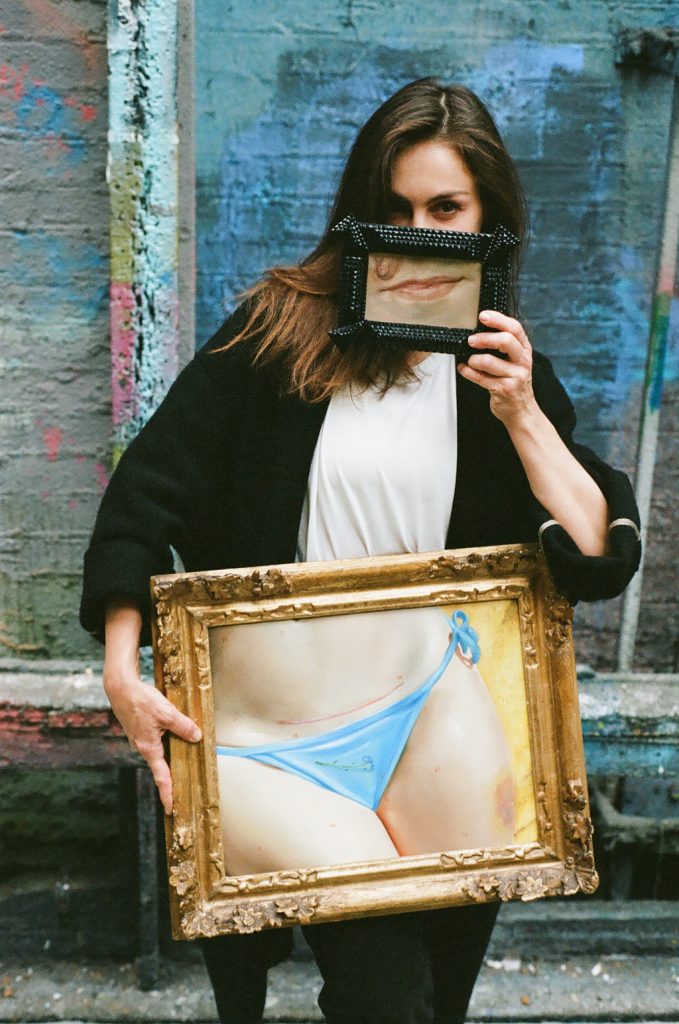
We caught up with the artist at her London studio.

Naomi Rea

Oda Jaune’s twisted poetical works, tinged with eroticism and humor, offer viewers a journey into the subconscious. The German Bulgarian painter’s surrealist figurative works will be the subject of an exhibition, “wOnderlust,” opening at Galerie Templon’s Saint Lazare space in Paris next week.
The exhibition takes us into Jaune’s fantastical world, slaloming between the magical and the monstrous, with work responding to the pandemic and the forced re-examination of humanity’s relationship with the natural world. “I’m fascinated by the idea of the transformation of human beings and of nature into someone or something that is always new,” she said.
Jaune’s unsettling works have been shown in solo exhibitions at the National Art Gallery in Sofia, Bulgaria, SEEN gallery in Antwerp, Belgium as well as in group shows in Europe and the U.S. In her latest outing, new oil paintings and watercolors will be shown around the central piece, Tree, a monumental 10-meter-long canvas. She will also debut her first hologram, which also projects a “tree of life” into the darkness of the gallery’s basement.
We caught up with the artist at her London studio about what’s on her mood board right now, her affinity for squirrel food, and how she gets herself out of a creative rut.
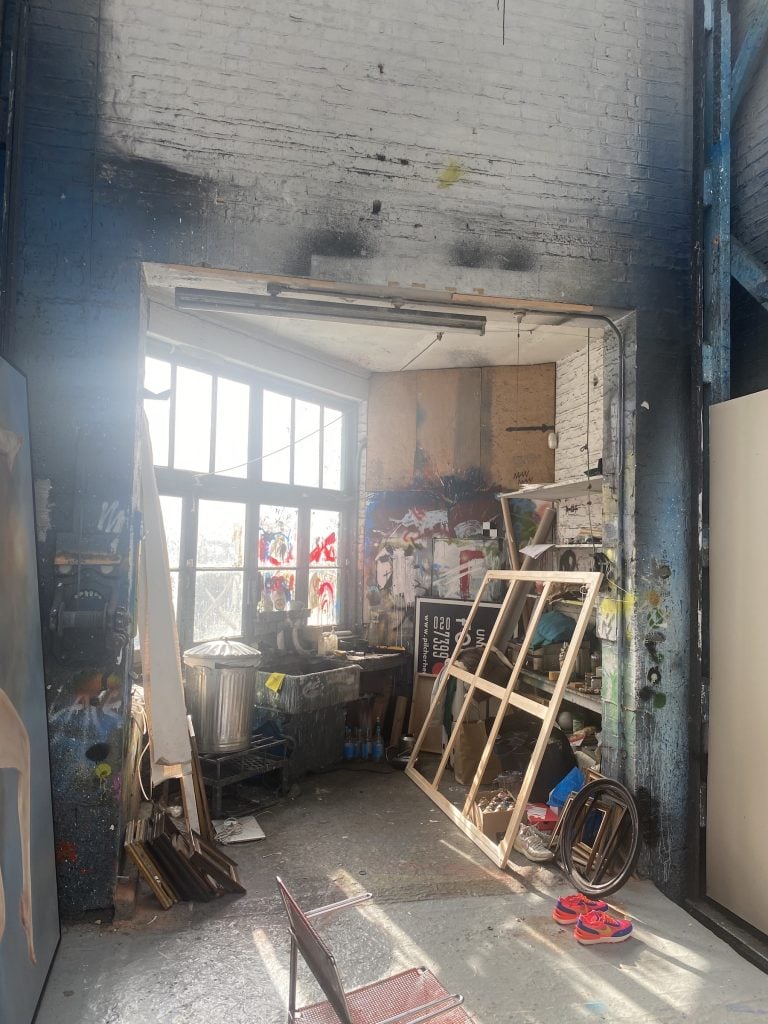
Oda Jaune’s studio. Photo courtesy Galerie Templon, Paris–Brussels.
What are the most indispensable items in your studio and why?
It is more a circumstance rather than a specific item: I need the daylight, and I cannot replace it with any of those artificial lights that try to imitate real light. It is essential for the nuances of the colors… However, as a material, the most essential item would be my oil colors. The surfaces I work on, on the other hand, can vary and are replaceable… I could paint on almost every surface: paper, canvas, any fabric, wood, ceramic, stone, wall… and I do not mind which surface it is as long as I have my oil colors.
Is there a picture you can send of your work in progress?
This canvas is a two-meter-high and 10-meter-long piece. I have been working on it for almost two years. I began it at the start of the pandemic and kept working on it until today, now in its last phase. I am happy that it will be shown for the first time to the public in January as part of my upcoming show at Galerie Templon. It shows a majestic, metamorphosing tree of life, unfurling along the trunk, populated by children—the world’s last survivors—who are engaged in enigmatic activities. This piece will be shown along with a big hologram, my first one. Inspired by my 10-meter-long piece, it is part painting, part sculpture, and will also reveal another version of the “tree of life” motif, projected into the dark.
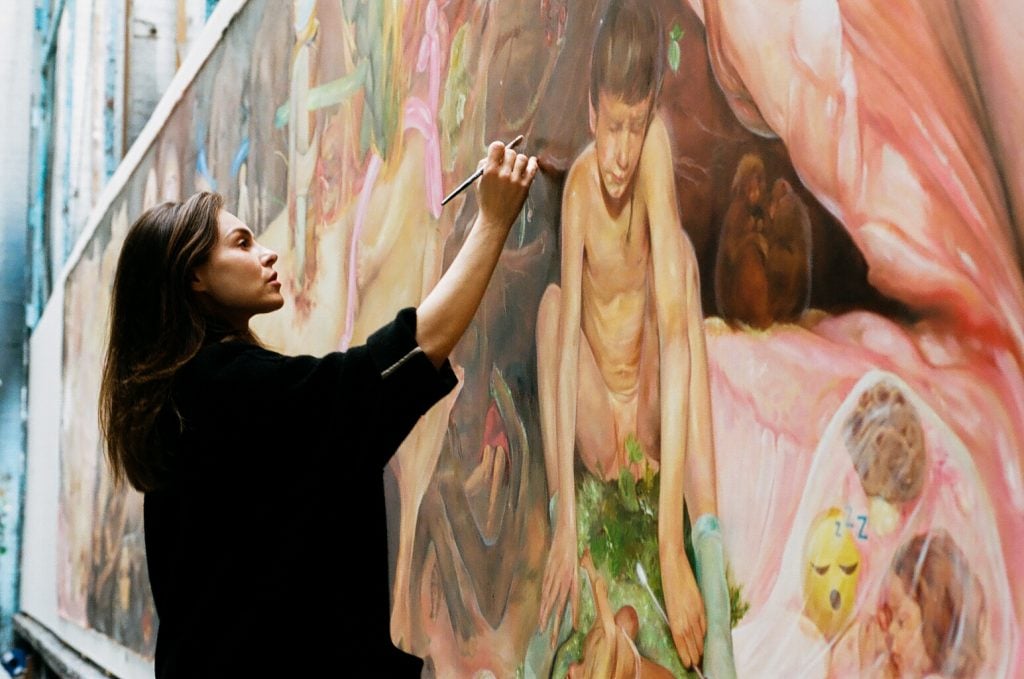
Oda Jaune at work. Photo by Max Heilbronn.
What is the studio task on your agenda tomorrow that you are most looking forward to?
You know, when I go to bed, I never think that I will have any specific task in the studio the next day. Actually, it is even the contrary—I think that I have zero tasks for the day after, and thus live on in complete freedom. It makes me feel like I will have a completely unpredictable day, and it allows me to not know how the work will develop, which is something I enjoy… And then, partly because of that, my favorite time of the day is the morning for sure. I love the morning, I love entering the studio, taking a first glance at the works that have just spent the night on their own. I love mixing fresh colors on my pallet. My eyes are rested, I am full of dreams and courage. I see my brushes touching the canvas for the first time, and that makes me the happiest in the world… feeling that it all begins now and that everything is possible!
What kind of atmosphere do you prefer when you work? Do you listen to music or podcasts, or do you prefer silence? Why?
For me, there is nothing better than silence when I am painting. But if there is some kind of noise around me, I would then play some classical or electronic music (with no lyrics) and there I find the silence again.
What trait do you most admire in a work of art? What trait do you most despise?
I know that I admire a work when, while seeing it for the first time, I feel right away that it has a soul … it needs to touch me profoundly, as if it were alive, or magic…
On the contrary, I don’t like a work when it does not feel genuine, when it feels like the work has not been created with a lot of depth, a lot of emotions, like if it is not coming out of the artist’s guts. When it is pretending to be a work of art but is instead an object of décor, not well-thought out conceptually speaking, but created to please or to sell.
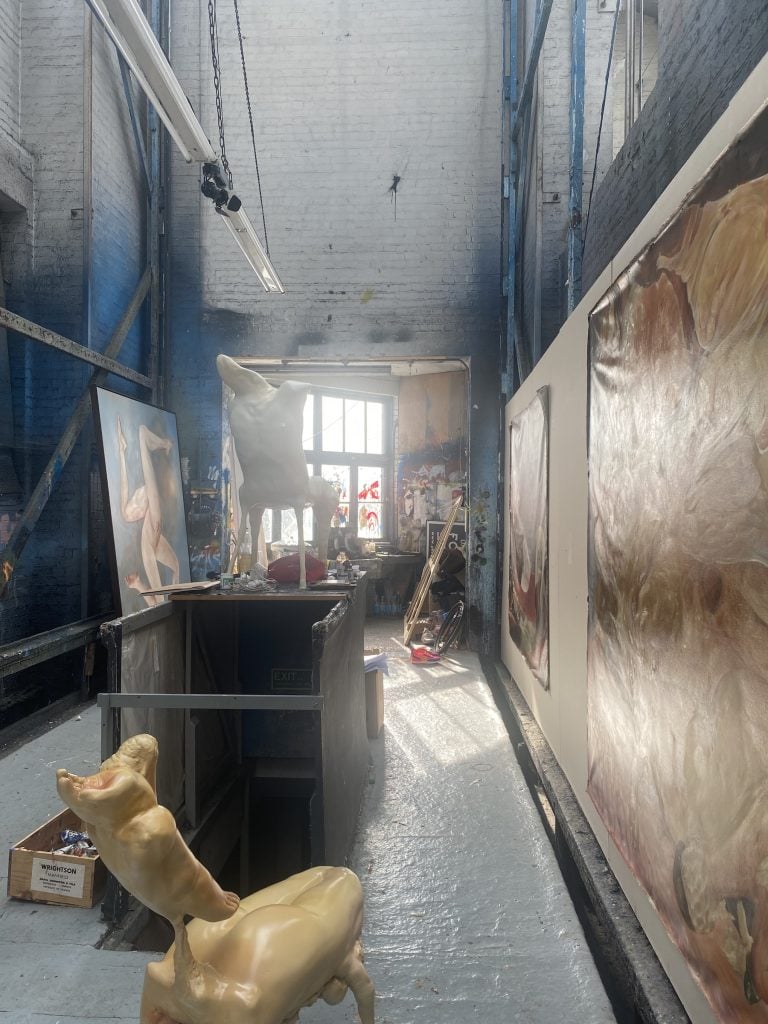
Oda Jaune’s studio. Photo courtesy Galerie Templon, Paris–Brussels.
What snack food could your studio not function without?
Nuts and dry fruits (probably what squirrels would live off). When I am in my studio I need some energy and something quick that can replace a meal as I sometimes find myself in a flow, and don’t want to interrupt my work.
Who are your favorite artists, curators, or other thinkers to follow on social media right now?
On social media, I mainly follow my friends and people I know …
When you feel stuck in the studio, what do you do to get un-stuck?
Taking a walk—it’s the best!
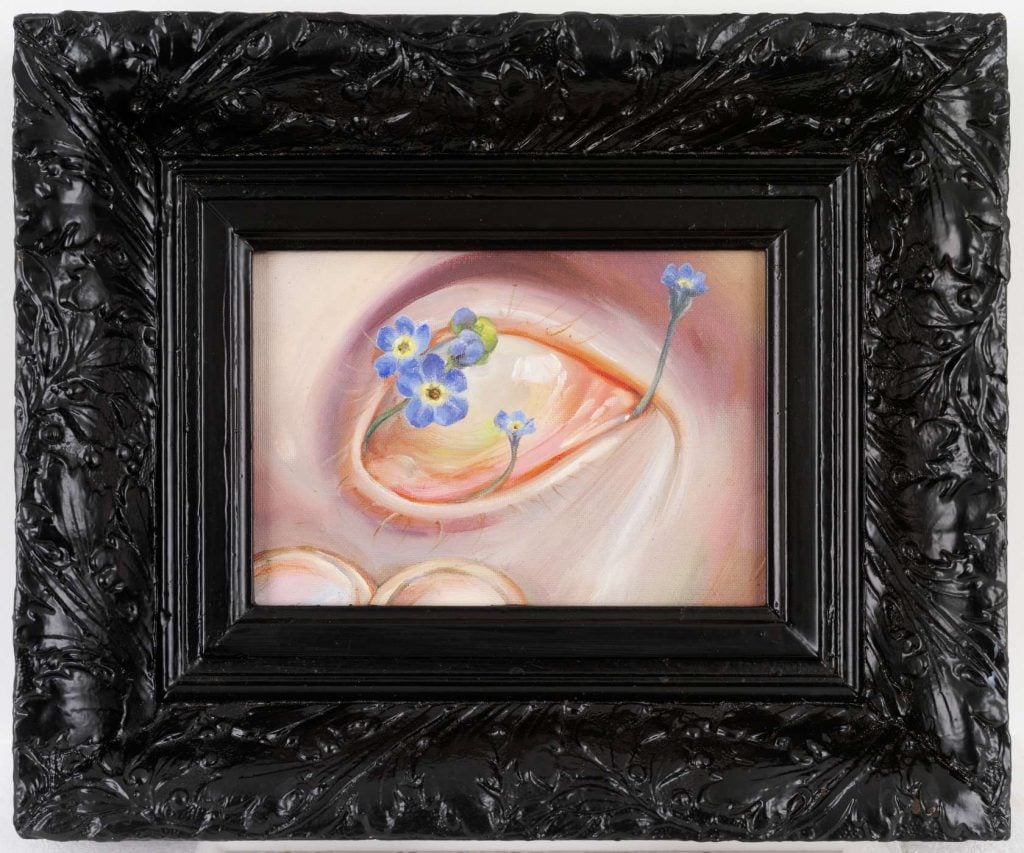
Oda Jaune, Forget Eye Not (2021). Photo courtesy Galerie Templon, Paris–Brussels.
What is the last exhibition you saw (virtual or otherwise) that made an impression on you?
“Panorama 23: par le rêve,” this year’s annual student exhibition at La Fresnoy, the French audiovisual school in Tourcoing, curated by Olivier Kaeppelin. In his own words: “The films or installations in Panorama 23 never give in to the simplifications of ideology, but put into crisis the world with which they are ‘struggling.’ They stand clear of rhetorical discourses or slogans. They turn away from that economy of meaning in order to offer us thought ‘through dream.’ With supreme freedom, they move alongside literary and scientific utopias. I have the feeling, in 2021, that they are back in the saddle, that they are ‘reconnecting’ the powers of dream, which they trust to move forward, in order to project into the universe their spaces and their forms.”
If you had to put together a mood board, what would be on it right now?
It would be everything that is impossible to see with the human eyes, what we are discovering through a microscope; it would be tiniest elements, things that are invisible to our eyes. I am fascinated by everything that is hidden and here at the same time, just knowing that there is another world that our world is built from, with incredible shapes, colors and meaning… A mood board of the invisible.
Oda Jaune: “wOnderlust” is on view January 8 through March 5 at Galerie Templon, 28 rue du Grenier-Saint-Lazare, Paris and on the gallery’s viewing room.